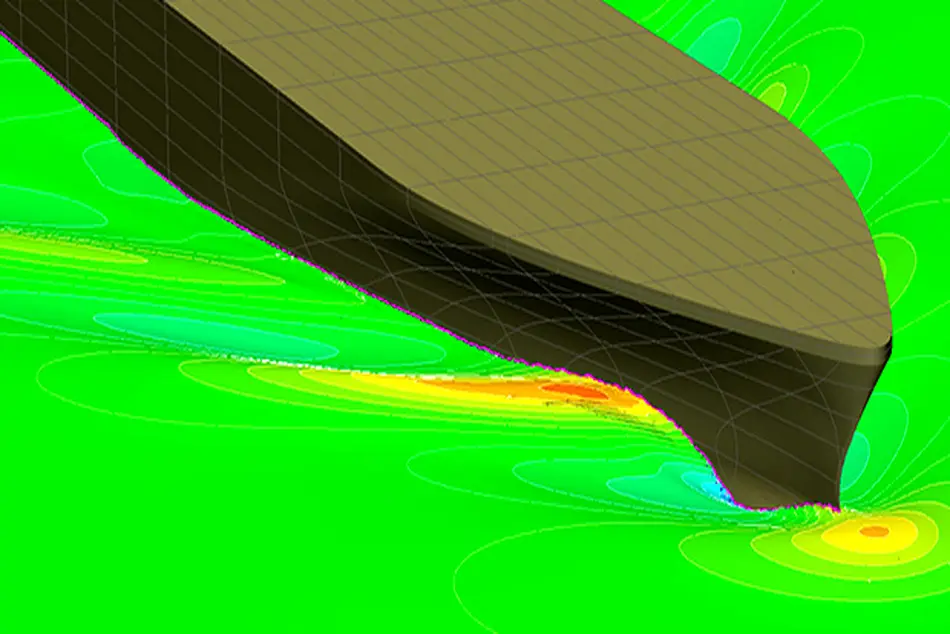New tool launched for assessment of hydrodynamic performance

As a vessel’s hydrodynamic performance is important for its fuel efficiency and life cycle costs, DNV GL has developed a tool to predict a design’s hydrodynamic performance quickly and accurately.
The new Virtual Trial application uses computational fluid dynamics (CFD) simulation to analyze, compare and benchmark the fuel efficiency of hull design variants at full-scale.
Understanding the characteristics that shape performance can result in a competitive advantage during the conceptual design and bidding phase of a newbuilding project, DNV GL notes.
An option for assessing hydrodynamic performance is empirical benchmarking, but the results will only reflect general trends rather than give accurate predictions and are of limited use for unusual and innovative designs. Further, model tests provide a much more detailed assessment of the hydrodynamic performance of a vessel, but with a typical lead time of about ten weeks, they can take too long for projects in the initial design and tender phase as well as being very costly.
As CFD simulation technology has matured it has become a viable alternative to traditional model basin tests, while reducing lead time and costs. However, the computer resources and expert know how to design and carry out such tests are still not wide spread.
The Virtual Trial application, removes the need for expert support by streamlining and automating the CFD simulation process. Users can upload individual vessel hull forms, run simulations with pre-set parameters and then easily compare their results against the results of similar vessels. Whether for a newbuilding or retrofit project, Virtual Trial reduces the barriers to full-scale CFD simulation testing and comparative benchmarking.
As explained, virtual trials can be launched in complete anonymity, from anywhere, at any time, by simply uploading the hull geometry file and defining the operating profile. Then, without the need for any CFD specific input, users can conduct fully automated full-scale RANSE (Reynolds-averaged Navier-Stokes equations) VoF (Volume of Fluid) CFD simulations on the resistance and propulsion of their vessel. The results are available within one week, in a web-based report where users can see the CFD results and hull lines in 3D and gain more insight into the flow details.
Using Virtual Trial on My DNV GL can also let ship owners compare design proposals from different yards or design offices during the bidding process. Competing designs can be uploaded to Virtual Trial by the designers themselves, to ensure that the hull lines stay confidential. The ship owner can then be granted access to the results, providing him or her with a consistent and impartial assessment of the designs at a fraction of the cost and lead time of model tests.



